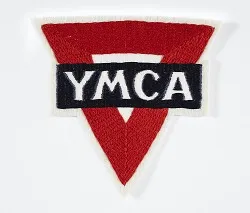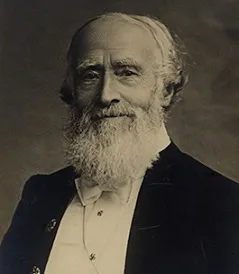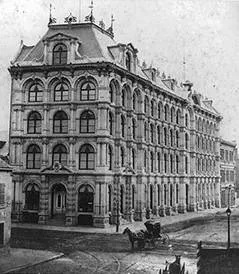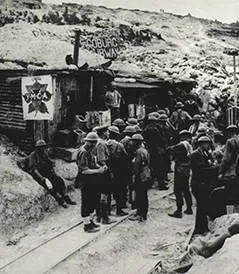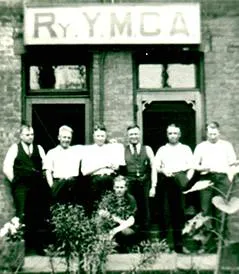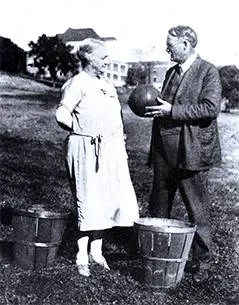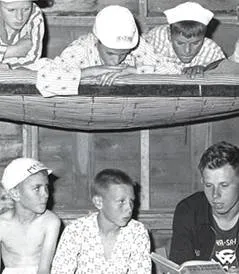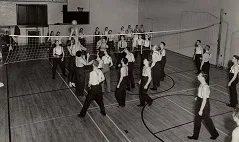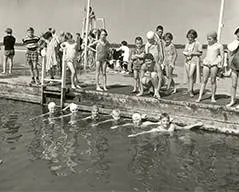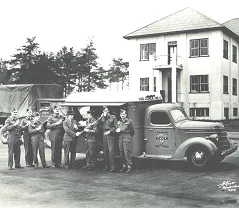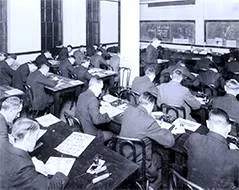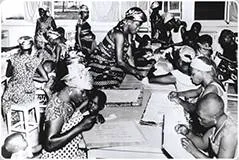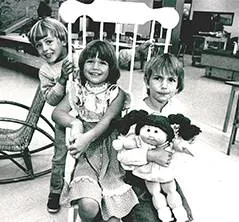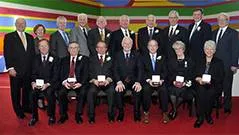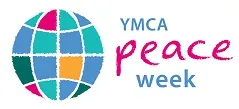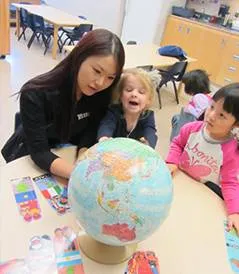The YMCA story began in London, England over 170 years ago with one man who had an idea about how to make his community stronger. From that idea sprang a movement that would spread across the globe, inspiring millions to grow in spirit, mind, and body. Throughout the years, we’ve evolved with the times, from the Industrial Revolution to the Digital Revolution…and made many important contributions to society along the way.
Watch A Timeline of the YMCA in Canada
Here’s a look at the significant milestones in the YMCA movement, both in Canada and internationally:
A 22-year-old draper, named George Williams, got the idea to start the Young Men's Christian Association, or YMCA, in 1844 in London, England in response to unhealthy social conditions brought on by the Industrial Revolution. At the time, it was revolutionary to discuss religious practices outside of the church.
The idea of the YMCA quickly caught on, and soon Associations were springing up in cities throughout England and Europe. By 1851, that same idea traveled across the seas. When the first YMCA in North America opened in Montreal on November 25, 1851, a grassroots effort to help people and communities to grow and thrive was set in motion. At first, YMCAs had strong links to the Protestant churches but this quickly changed as people from all churches were welcomed.
From 1866 - 1946, YMCA War Services provided support in the form of recreation, religious, educational, and entertainment services to troops serving abroad. YMCA staff were a welcome sight and became known for offering moral support and comfort by delivering hot tea, equipment, biscuits, and more to Canadian soldiers.
The YMCA helped grow the Canadian Pacific Railway by supporting railway workers in the late 1800s. Railway YMCAs were built along developing railway lines, providing recreation, literacy programs, reading rooms, and accommodation to railway workers who were otherwise limited to visiting saloons during their leisure hours. Several Ys today can trace their roots back to a railway YMCA.
Watch the Canadian Railway YMCA Story
Basketball was invented in 1891 at the YMCA International Training School in Massachusetts, USA, which later became Springfield College. The director of the Physical Education Department of the YMCA Training School, Dr. Luther Gulick, assigned Canadian YMCA physical director James Naismith to a class of boys who were completely disinterested in the usual exercises and sports. Naismith became determined to invent a game for his “class of incorrigibles.”
By hanging two peach baskets from the railing of the gymnasium's second-level running track, a new sport was born that would eventually spread across the globe. While basketball has evolved over the years, 12 of Naismith's original 13 rules have remained intact to some degree.
The First Leaders Corps began in Montreal to train Physical Directors to become leaders in physical education and leaders in the community, with classes ranging from anatomy, physiology, and first aid, to prayer meetings for spiritual growth and community service. Recognizing that young people could benefit from leadership development as well, the YMCA Junior Leader Program was established in 1906, with a program for girls debuting in 1948.
William G. Morgan, an instructor at the YMCA in Holyoke, Massachusetts, sought to invent a game for his classes that would involve less physical contact than basketball. Based on a variation of the game badminton, also referred to as "minton," he called the new game "mintonette." The first game was played on December 2, 1885 by a gym class of businessmen. The name was changed to volleyball in 1896, to reflect the action taking place.
In 1906, Toronto YMCA staff member George Corsan introduced a radically different kind of swimming instruction. The technique was unique for two reasons: it was taught to groups of people rather than individuals; and before even going into the water, students went through a series of land drills that covered the basic movements.
These new swimming classes quickly became highly popular. In 1910, Canadian William Ball launched a national YMCA swimming instruction program.
Father’s Day in its present form was dreamed up by Sonora Louise Smart Dodd in Spokane, Washington. She wanted to honour her father, a Civil War veteran who had raised her and her five siblings alone. Presenting her idea at a meeting in June 1910, Sonora petitioned the Spokane Ministerial Alliance and the Spokane YMCA to recognize and celebrate Father’s Day. They enthusiastically endorsed the idea, hosting the first Father’s Day celebration on June 19, 1910.
Moina Michael, an American teacher working for the YMCA Overseas War Secretaries organization in New York City, is recognized as the first person to wear a poppy to commemorate Remembrance Day. After reading John McCrae’s poem “In Flanders Fields,” she immediately “pledged to keep the faith and always to wear a red poppy of Flanders Fields as a sign of remembrance and the emblem of 'keeping the faith with all who died.'" The poppy remains a lasting symbol of remembrance in Canada.
The YMCA of Montreal was very active in promoting education. By 1926, its education program became Sir George Williams College, which eventually became Concordia University in 1974. In 1938, the Ottawa YMCA saw a need for higher education in its own city and by 1942 helped open Carleton College, known today as Carleton University. In 1959, the North Toronto YMCA helped to initiate the development of York University.
Right from the beginning, Canadian YMCAs were a part of the International YMCA movement and attended the founding of the World Alliance of YMCAs. In 1889, 41 Canadians welcomed the launch of the World Service program for YMCAs in Canada and the United States. Canadian YMCA Secretaries helped set up programs and YMCAs overseas, which were then run locally. 1967 marked the first time individual Associations in Canada sponsored specific overseas projects as part of their 'World Service' activities followed by partnerships with individual overseas YMCAs.
For the first half of the 1900s, many YMCAs and YWCAs operated Day Nurseries to serve working families, although no licensing agencies existed at that time. As more women began to work in the 1960s, many YMCAs began offering licensed child care programs. In 1967, the Ottawa YMCA-YWCA opened its first licensed Head Start Nursery School Program. By 1972, it was running a licensed child care centre and a year later, Winnipeg had five licensed nursery school programs in branches around the city.
The YMCA Fellowship of Honour is the highest honour and most valued award in the YMCA in Canada. The Fellowship of Honour recognizes outstanding YMCA volunteers and staff who give tremendous leadership towards our mission and expand the capacity of the YMCA in Canada. Over 120 individuals have been recognized with investiture into the YMCA Fellowship of Honour since it began.
YMCA Peace Week is celebrated by YMCA movements around the world every November. In 1984, YMCA Canada first initiated a national program to commemorate YMCA Peace Week in Canada.
The YMCA Peace Medallion was introduced in 1987, which recognizes the efforts of individuals and organizations in building peace in their communities and has since been awarded to over 1,100 individuals and groups.
The YMCA Playing to Learn™ curriculum helps children up to age 6 discover learning through creative play, and works with a child’s natural curiosity and development. In 2006, the curriculum was first rolled out to licensed YMCA Child Care Centres across Canada.
The YMCA of Greater Toronto leads the rollout of the YMCA curriculum for the Before and After School program, YMCA A Place to Connect™. This program makes the YMCA the first organization in Canada to have a curriculum for school age programs.
